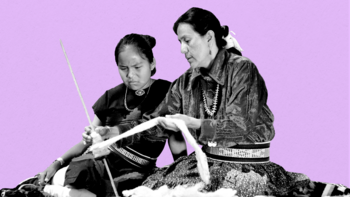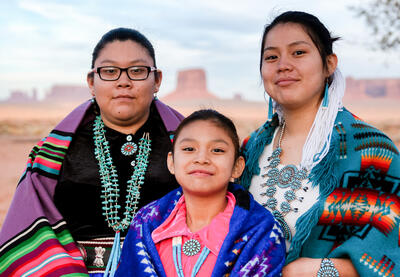Native American Heritage Month provides an opportunity to celebrate the diversity of Native cultures and communities. To honor Native peoples, we uplift their honest histories, significant contributions and contemporary experiences.
As scholar Debbie Reese reminds us about supporting Native American young people: “Our children are Native every day. But in far too many places, books by Native writers are only brought into the classroom in November [during Native American Heritage month]. We are who we are, all year long. Use the books, all year round. Bring those possible selves into the classroom as a matter of course so that Native children’s identities are affirmed, every day.”
We offer the following resources to honor and teach the truth about Native peoples and to help ensure that learning about this heritage takes place all year long.
[Updated Nov. 2024]
Learning for Justice Resources

Celebrating African and Indigenous Cultures (Growing Together Series)
[2024] Conversations about African and Indigenous cultures are essential for learning about the history of our country and making connections with a broader world. This learning journey offers talking points and activities for children and families.
Debbie Reese on Book Bans and Native Representation
[2022] In this LFJ magazine Q&A article, scholar Debbie Reese discusses book bans and the fear of a just society, emphasizing the importance of celebrating and affirming Native children’s identities every day.
The Forgotten Slavery of Our Ancestors
[2020] This short film (just over 12 minutes), part of the Teaching Hard History: American Slavery Classroom Videos series, offers an introduction to the history of Indigenous enslavement on land that is now the United States. As the featured historians point out, the enslavement of Indigenous peoples stretched from Alaska into South America. It predated and helped shape the system of African enslavement in New England, and it lasted into the 19th century in the West. “This,” explains historian Andrés Reséndez, “is our shared history.”
Indigenous Peoples’ History
[2019] This webinar, cohosted by experts from the Smithsonian National Museum of the American Indian, delves into the ways American history instruction often fails to acknowledge—and contributes to—the erasure of Indigenous stories and perspectives.

Teach About Native American Women Leaders
[2018] This resource article provides recommendations to build students’ media literacy by helping them contextualize stories about women candidates—and particularly Native American women candidates—during election season and beyond.
With and About: Inviting Contemporary American Indian Peoples Into the Classroom
[2017] There’s a long history of U.S. schools failing Indigenous peoples, cultures and histories. In this article, Native parents and educators share examples of how educators and schools still get it wrong—and the steps they can take to fix their mistakes.
Q&A: Native Knowledge 360°
[2017] The same limited stories about American Indians persist in textbooks. This Q&A examines how the Native Knowledge 360° Education Initiative, a new program from the National Museum of the American Indian, is looking to change that.
Rewriting History—For the Better
[2015] More states are including American Indians in their mainstream curricula. This article provides recommendations and resources for teaching history honestly and going beyond the textbooks.
Toolkit For Rewriting History—For the Better
[2015] American Indians are largely absent from mainstream social studies curricula. This toolkit for the article “Rewriting History—for the Better” showcases some of the best online sources for teaching about American Indians with an eye for inclusivity and accuracy.
Story Corner for Children and Families

“Two Pairs of Shoes” by Esther Sanderson
When Maggie receives two pairs of shoes for her birthday, she must learn to walk between two cultures.
“Connected to Everything” by Jennifer Greene
This story is adapted from a traditional tale of the Bitterroot Salish, a Native American tribe in Montana.
External Resources
Native American Heritage Month
This web portal is a collaborative project of the Library of Congress and the National Endowment for the Humanities, the National Gallery of Art, the National Park Service, the Smithsonian Institution, the United States Holocaust Memorial Museum, and the U.S. National Archives and Records Administration.
Native Knowledge 360° Education Initiative, National Museum of the American Indian
Native Knowledge 360° (NK360°) offers educators and students perspectives on Native American history and cultures. The program provides educational materials, virtual programs and educator training.
American Indians in Children’s Literature
This website, established by scholar Debbie Reese of Nambé Pueblo, offers book reviews and analyses of representation of Native peoples in books for children and young adults.

Celebrate Native American Heritage Month and strive to ensure Native children are supported in schools and represented in curricula all year long.
